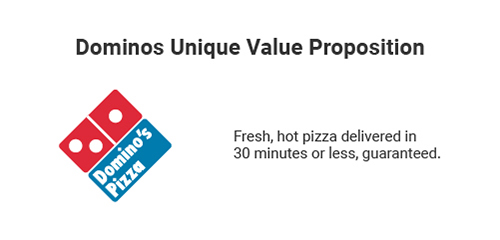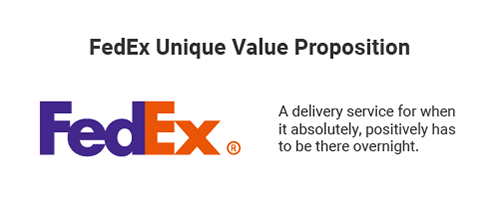
On the ever-growing to-do list of running a successful fitness business, creating a mission statement is one item that should be done early on. And though it might be easy to put this task off, especially if you’re wrapped up in other aspects of marketing your personal training business, having a strong mission statement can actually impact all of your promotional efforts.
Grow Your Fitness Brand with Trainerfu – Start Now!
Build your brand and attract more clients with marketing tools that work. Discover how Trainerfu can help you promote your business effortlessly.
Try it freeWe’re going to cover everything you need to know about writing a great mission statement so that you don’t have to put this task off any longer! By the end of reading this article, you’ll have a unique mission statement that helps you attract your ideal clients and grow your personal training business.
Let’s get to it!
Inside this blog:
- Chapter 1: What is a mission statement?
- Chapter 2: Why you need a mission statement?
- Chapter 3: How to write your perfect mission statement?
What is a mission statement?
To help you understand what a mission statement is, let’s start by sharing some examples of two of the most epic mission statements in history.
Dominos: Fresh, hot pizza delivered in 30 minutes or less, guaranteed.

FedEx: A delivery service for when it absolutely, positively has to be there overnight.

So what makes these so special?
- They are unique.
When FedEx and Dominos launched these mission statements, no one else in their industries was offering anything like it!
- They deliver a BIG benefit that their ideal clients truly care about.
Benefit = Pizza delivery in 30 mins or less
Benefit = Packaged deliver overnight
- They’re not cliches.
These mission statements are specific and unique. They aren’t saying what every other business is saying, like “best customer service”.
- They show the competitors shortcomings
Dominos’ guarantee was that they will give you a free pizza if they don’t deliver in 30 mins or less. None of the pizza companies could give this guarantee. Therefore, their mission statement not only tells people what they do well, it also tells what their competitors can’t and won’t do.
Now you have a better idea of what a mission statement is and the four essential qualities one must have. Let’s move on to what a good mission statement can do for your business.
Why you need a mission statement?
Dominos and FedEx are HUGE brands! Is it really that important for solo personal trainers to create a mission statement for their small fitness businesses? You bet! Here’s why:
Mission Statements Help You Get Attention
Every marketing and promotional effort you make is all about bringing attention to your business. Attention is the most important commodity and having a unique mission helps you stand out and get noticed.
A strong mission statement will impact every marketing effort you make. If you are unique, your Facebook ads will get more clicks and your Instagram content will get more shares.
Your followers will talk about you and your business. All of this will lead to the cost of finding new leads dropping drastically.
Higher Conversion and Price
If you offer something that people really care about that no one else is offering, two big things will happen.
- You will convert more people.
- People will pay the price you want.
Enough said!
Determines Your Vision
Coming up with your mission statement can also help give your business a vision.
Your vision helps keep you focused. It impacts who you market to and the decisions that you make for your business.
For example, Southwest wanted to make their airlines the most affordable. So when other airlines started offering fancy meals in flight, Southwest didn’t. It was an easy business decision because it helped them stay aligned with their mission.
Having a clear vision also makes it easier to grow your team. People that buy into your mission will want to work for you. And hiring will be easy for you, because you will be focused on finding people that best support your mission.
How to write your perfect mission statement?
When writing your mission statement, you’re basically trying to find the most compelling answer to the question your prospects are all asking:
Why should they pick you over your competitors?
Think about a quality or experience that is missing from the market and how you can provide a unique solution for that to your customers in a way that’s different from what your competition is already doing. The following steps can help you flesh this out.
Step 1: Determine Your True Competition
Think you know your true competition? You might be surprised to find out who your actual competition is. You probably assume your competitors are the businesses who are the most similar to yours, and this makes sense.
However, this may not be the same way your clients perceive your business. It’s very possible they don’t even know about other businesses that resemble yours.
It’s possible, for example, that even if your business is a boutique studio, most of your clients’ second choice is actually a personal trainer– because the nearest boutique studio competitor is branded differently or simply located too far away.
Think of it this way: Your true competition is the business your clients would have chosen if you didn’t exist. Every client you ask might have a slightly different answer. Even so, you can probably get a general idea overall.
If you are a personal trainer, for example, and 80% of prospective clients consider the best alternative to you a local gym, then that local gym is your #1 competitor.
Spend a little time putting yourself in your ideal client’s shoes and think about who your real competitors are from that perspective. Write them down.
Step 2: Make a List of Things You Do Differently from Your Competitors
Now that you’re clear on your competitors, it’s time to focus on what makes you different from them. For this step, you want to focus on features rather than benefits.
Features are what you do to deliver benefits to your clients. For example: “Nutrition Coaching” is a feature. The benefit it delivers is “Faster Results”.
Start by making a list of all the features that you provide that your competitors either lack, or don’t do a great job at delivering . If you think your business does a certain thing way better than your competitor does, you need to back it up with proof.
For example, if you have superior customer service, how would you back that up with proof? Your proof, in this instance, may be that you have more customer service reps or that you offer 24/7 support.
It’s one thing to say you offer a certain feature; the important part is going one step further to show the client how you actually offer that feature.
Step 3: Derive Your Unique Benefits
Now it’s time to focus on benefits. Derive benefits from every unique feature you listed in the previous step. A unique feature could lead to one or more benefits.
Let’s take online training as another example. In and of itself, online training isn’t necessarily exciting. But think of the incredible benefits online personal training has to offer. Online personal training is:
- Affordable
- Brings faster results
- Flexible
Once you have listed all the benefits, review them to see if you can combine them to make an even bigger benefit.
With the example of online training, the overarching benefit is, “Get faster results on your own time without breaking the bank”.
Step 4: Shortlist The Benefits Your Prospects Truly Care About
You may have been able to come up with multiple benefits that your competitors lack, and that’s awesome.
Now it’s time to narrow them down to one or two that really stand out. Remember, even if you can offer a ton of great benefits, it’s hard for clients to focus on any particular one.
In this step, you want to shortlist 1-2 really major benefits that the prospects in your niche truly care about.
Your mission statement will be based on the benefits your prospects care about that you offer and your competition doesn’t.
Write Your Mission Statement And Share It With The World
Once you’ve worked through the four steps above, you should feel more confident writing your mission statement. Remember that your first draft is just that – a draft! You can edit it as much as you need to. Ask coworkers or friends for their input, and tweak your mission statement based on trusted feedback.
Once you’ve written a mission statement that you are happy with, feature it prominently on your website and all other marketing materials. Let it inspire social media initiatives, flyers at the gym, and email campaigns.
Stay consistent, and help the world get familiar with who you are and what you do differently. The right mission statement can help you stand out and grow your business faster than your competitors.
Of course, writing a great mission statement is one piece of the puzzle when it comes to running a successful personal training business. Be sure to check out some of these other great resources:
Frequently Asked Questions
1. What is a personal trainer mission statement?
A mission statement is a concise declaration of your purpose as a personal trainer. It highlights what you do, why you do it, and the value you provide to your clients.
2. Why is a mission statement important for personal trainers?
A clear mission statement helps:
- Define your goals and values
- Attract your ideal clients
- Differentiate you from competitors
- Guide your marketing strategy
- Build trust and credibility
3. What should a personal trainer mission statement include?
An effective mission statement includes:
- Your target audience (e.g., busy professionals, athletes, seniors)
- The specific problems you solve (e.g., weight loss, strength training, injury recovery)
- The results or benefits your clients can expect
- Your unique approach or philosophy
4. How long should a mission statement be?
Keep it short and impactful—ideally, 1-2 sentences that clearly communicate your purpose and values.
5. How do I identify my ideal client when crafting my mission statement?
Consider:
- Who you enjoy working with most
- The fitness goals you specialize in
- The demographics of your target audience (age, gender, lifestyle)
- The common challenges they face
How to Price and Package Online Personal Training Services
How to Come Up with Great Fitness Blog Ideas that Generate Traffic